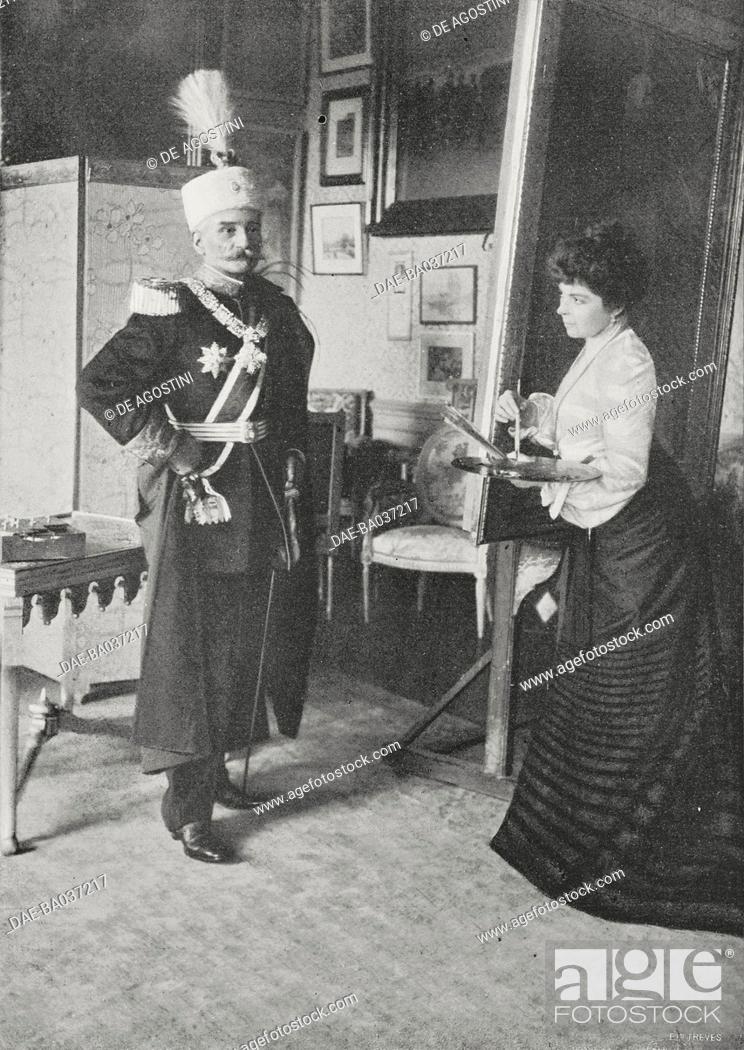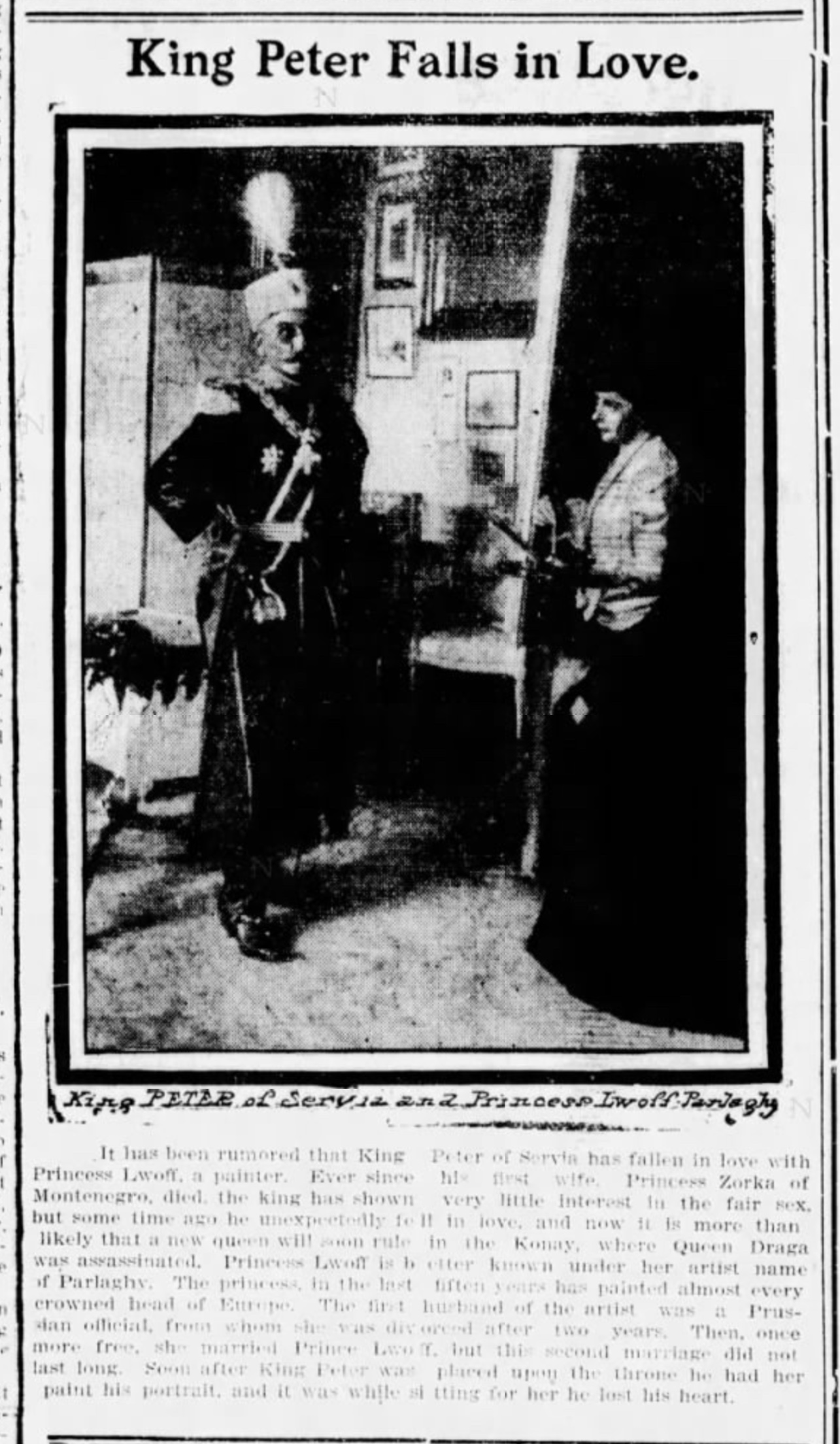The Bellingham Herald (Bellingham, Washington – 09 Sep 1905, Sat) Page 2
It has been rumored that King Peter of Serbia has fallen in love with Princess Lwoff, a painter. Ever since his first wife, Princess Zorka of Montenegro, died, the King has shown very little interest in the fair sex, but some time ago he unexpectedly fell in love. Now it is more than likely that a new queen will soon rule in the Konak, where Queen Draga was assassinated.
Princess Lwoff is better known under her artist name of Parlaghy. In the last fifteen years, the Princess has painted almost every crowned head of Europe. The first husband of the artist was a Prussian official, from whom she was divorced after two years. Then, once more free, she married Prince Lwoff, but this second marriage did not last long.
Soon after King Peter was placed upon the throne, he had her paint his portrait, and it was while sitting for her that he lost his heart. [New York Times]
This story is crafted from a PR photo of The Princess Vilma Lwoff-Parlaghy painting Peter I in December 1903.
9 months after this event, was born…

Born on June 22, 1906 (1906 - 2002) Billy WilderAustrian-American filmmaker |

Born on July 11, 1844 (1844 - 1921) Peter I of SerbiaLast king of Serbia (1903–1918) and as the first king of the Serbs, Croats and Slovenes (1918–1921). |
King Peter I of Serbia (1844-1921) posing for the painter Vilma Lwoff-Parlaghy in the Konak in Belgrade, November 8, 1903, Serbia, photograph by Parkson, from L’Illustrazione Italiana, Year XXX, No 51, December 20, 1903. De Agostini / Biblioteca Ambrosiana

This item was published on the front pages of half a dozen papers between September 8-13, 1905.
Meanwhile, this interesting gossip gets buried on page 6 of the Jackson Daily News!
This placement is profoundly symbolic. It tells the world that knows how the world truly works that everything is fine and that Peter I is under the soul care of exactly the right person, The Princess Vilma Lwoff-Parlaghy, who is related to his late wife, Princess Zorka of Montenegro.
Peter I did not marry The Princess Vilma, but for a while this 17 operation upset just the right people, about just the right thing, which is the paramount work of the Princess Vilma.
Peter I and Princess Vilma would enjoy a decade long love affair in their enchanted next life together!
To be continued…



